Veroia
It is a modern town about 70 km southwest of Thessaloniki. There are only 2 Jews living there now, a synagogue (not in use), the original Jewish quarter and a cemetery.
Historical background
The Jewish presence in Veroia dates back to the Roman era. During that period (50 or 51 and 57 A.D. ) Although no specific information is available, it is likely that a small Jewish Community existed in Veroia in the Roman and Byzantine period. By the end of the 15th century this community grew due to the arrival of numerous Jews from Spain and Portugal.

The Jewish community of Veroia always kept strong ties with the neighbouring large communities of Thessaloniki and Monastir. The Turkish traveller Evlijah Tselebi who visited the city in 1668 mentions this. The main commercial interests of the Salonikan Jews were in the area of the textiles, and Veroia was surrounded by springs and running water for washing clothes, especially after dyeing. Veroia also produced fine Kosher cheeses that were in constant demand up until modern times.
In the 18th century a fire destroyed most of the old Jewish mahallasi (quarter) and it was quickly rebuilt in quite a grand manner. In keeping with normal Ottoman practice, the Jews had the right to their own neighborhood within the walls – it was not a “ghetto” in any sense of the word.
The general affluence of the Veroia Jews in the 19th century, as indicated by the rebuilding and in many cases redecorating of their houses at that time, was no doubt caused by better communications between Veroia and its two closely connected fellow Jewish communities in Thessaloniki and Monastir.
In 1941, 850 Jews lived in Veroia; 680 out of them were deported by the Nazi occupiers and exterminated in the death camp of Auschwitz – Birkenau. At the end of the war, the community was dissolved. Today two Jewish families live in Veroia.
Synagogue
The Synagogue is North West inside the Jewish quarter, next to the bank of Tripotamos River. It bears architectural features copied from older small synagogues of Thessaloniki. Four pillars at the center determine the Bimah (Tevah), and the Sanctuary (Echal) is against the eastern wall. The floor is made of wooden planks and the center is decorated with mosaic decorative tiles. The mikveh (ritual religious bath) is still preserved behind the Synagogue.
The Jewish quarter
Barbouta, the Jewish quarter of Veroia, is located near Tripotamos River in the western part of the city. It is closed and isolated and its structure is clearly defensive. The steep slope and tall houses form a natural boundary for the quarter on the side facing the river. The exterior facades of the block of buildings complete this isolation on the other sides.
The quarter consists of a single street running between approximately 50 attached houses bordering it on either side. These multi-storied houses are in fine Macedonian style architecture, and are linked on the ground floor (internally) by connecting doors. Inscriptions in Hebrew still appear on many if them.
Together with the synagogue, it was recently renovated and its Macedonian houses are now preserved.
Cemetery
The old cemetery is on the west bank of Tripotamos River, opposite the Jewish quarter, 500 meters away. This is an interesting case because we encounter the traditional phenomenon where the quarter and the cemetery are separated by a steam of water.

